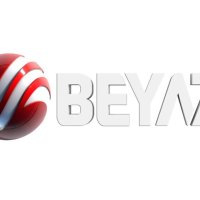Green Retreats: 5 Hotels That Lead the Way in Sustainable Tourism
HR Tech: When the Computer Says No
As the world rapidly moves towards digitalization, the human resources (HR) department is no exception. HR professionals are increasingly relying on technology to streamline their work processes, from recruiting and onboarding to payroll and performance management. However, as much as HR technology can be beneficial, it can also pose challenges when the machine says no.
Automated Recruitment Processes: Is the AI Biased?
One of the major contributions of HR technology is in the recruitment and hiring process. Automated tools help HR professionals sift through large volumes of resumes, quickly identify top candidates, and schedule interviews. However, the success of these tools is based on data, and if data inputs are biased or incomplete, the outcome can be discriminatory. For example, AI recruitment tools may discriminate against candidates based on their age, gender, race, or even educational background. It is essential for HR professionals to ensure that these tools are unbiased and designed to provide diverse and inclusive results.
Performance Management: Does the Tool Measure the Right Metrics?
HR technology tools can be great assets for performance management if they are used correctly. However, if the tool measures the wrong metrics or fails to capture the entire picture of employee performance, the results can be counterproductive. For instance, if an AI tool measures an employee's output but fails to consider quality, then the tool may overlook underperforming employees who produce lower-quality work. HR professionals must, therefore, ensure that they select the right tool and provide sufficient training to effectively evaluate employee performance.
Payroll and Benefits: Can the Machine Keep up with the Constant Changes in Regulations?
Maintaining accurate and efficient payroll and benefits systems is essential for any HR department. However, regulations change frequently, and the task of ensuring compliance can be overwhelming for HR professionals. HR technology can ease this responsibility by automating certain processes. However, these tools must be capable of keeping up with the constant changes in regulations to ensure full compliance. HR professionals must regularly audit these systems to ensure that they are aligned with current regulations and that the output reflects the company's values.
Employee Engagement: When Does Automation Begin to Hinder Rather Than Help?
Employers must focus on keeping their employees engaged and motivated if they want to achieve business success. HR technology can facilitate employee engagement by providing employees with access to training and development opportunities, performance feedback, and career development. However, when technology is the primary means of engagement, it can be counterproductive. Technology-driven communication can often eliminate the sense of community and interaction that is necessary for an engaged workforce. HR professionals must find a balance between automation and human interaction to ensure that employee engagement is not sacrificed for the sake of technology.
Conclusion
HR technology can provide significant benefits to employers, but it can also present difficulties when poorly managed. Employers must be careful when implementing AI-driven recruitment tools, automated performance management systems, payroll and benefits technology, and employee engagement programs. The key to successful implementation is ensuring that HR professionals stay engaged in the process and regularly audit and refine tools to ensure that they align with the company's objectives, values, and culture. By doing so, employers can reap the benefits of HR technology while maintaining an engaged and inclusive workforce.
Comment
Popular Posts
- 1
- 2
- 3
- 4
- 51 year ago
Latest Posts
- 1
- 2
- 3
- 439 minute ago
- 5
Categories
- World 13191 Post
- Knitting 18 Post
- General 17 Post
- Travel 183 Post
- Technology 12247 Post
- Movies and Series 14088 Post












There are no comments yet.